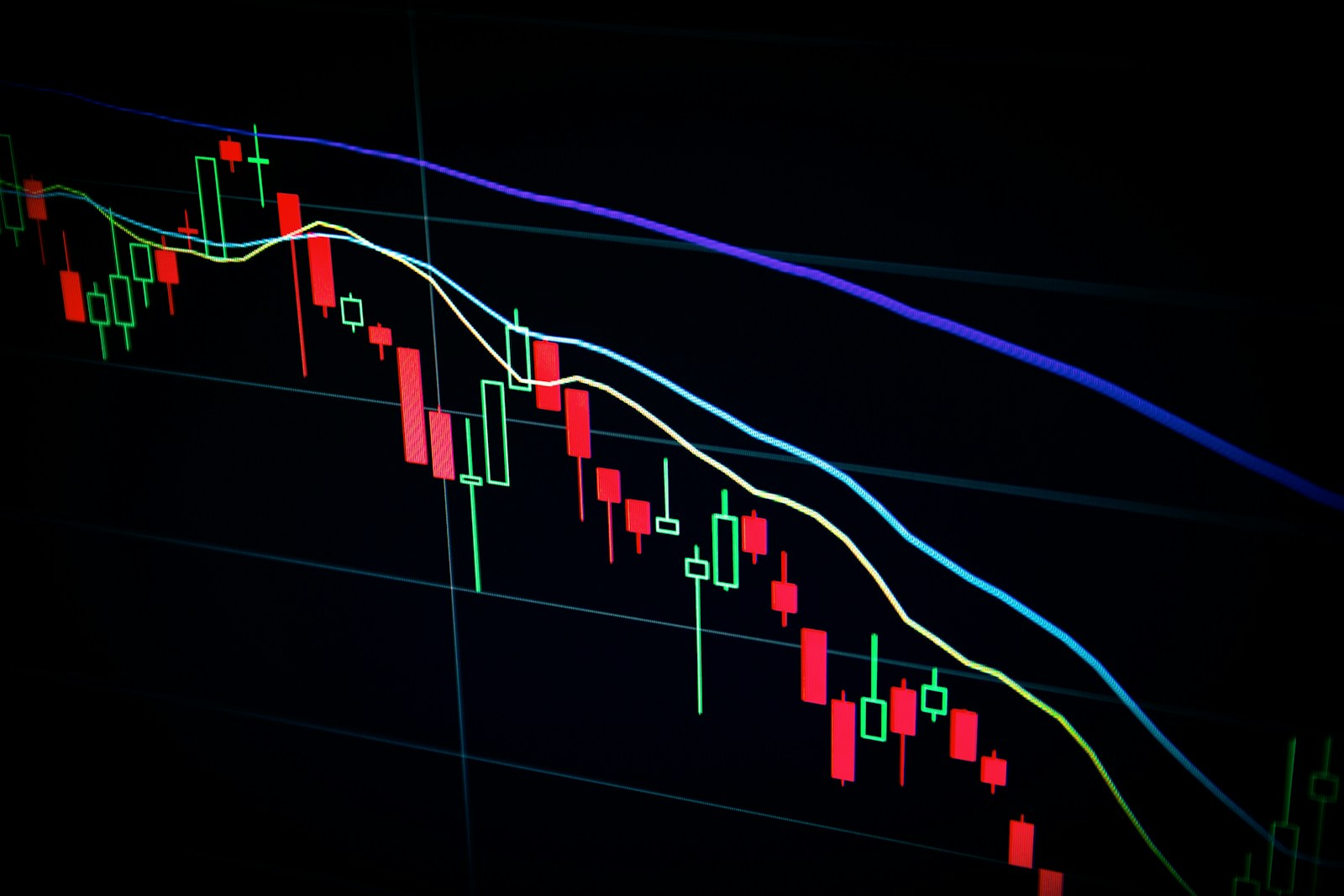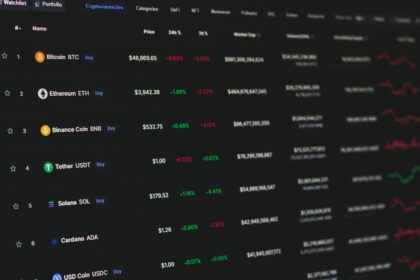Market facilitators play a critical role in maintaining efficient trading environments by continuously quoting both buy and sell prices on exchanges. These actors help narrow the spread, which is the difference between the highest bid and lowest ask, enabling smoother transactions with reduced slippage for traders.
By supplying consistent order flow, these specialists ensure that assets remain accessible even during volatile periods. Their activity stabilizes pricing and allows participants to enter or exit positions without significant delays or price jumps, which is crucial for exchanges handling high volumes of digital asset trades.
Recognizing how these entities operate helps traders anticipate market depth and execution quality. Observing their quoting behavior can reveal moments of increased liquidity or tightening spreads, offering insights into optimal entry points and risk management strategies within the exchange ecosystem.
How liquidity providers enhance crypto exchange efficiency
Liquidity facilitators play a pivotal role in ensuring smooth trading operations on cryptocurrency exchanges by maintaining continuous bid and ask offers. These entities submit orders on both sides of the order book, effectively narrowing the price difference known as the spread. By doing so, they reduce slippage for traders and enable faster execution of transactions, which is particularly important in markets with volatile asset prices.
On decentralized platforms, automated algorithms often act as these facilitators, adjusting pricing dynamically based on supply and demand. Such mechanisms provide constant availability of assets for buying or selling without waiting for counterparty orders, thereby stabilizing trading conditions. This function is crucial for less popular tokens that otherwise might suffer from low transaction volumes and high volatility.
Technical aspects and examples of liquidity facilitation
The core task performed by these intermediaries involves managing inventory risk while offering competitive quotes. For example, professional firms use sophisticated quantitative models to predict short-term price movements and set their bids and asks accordingly. This approach helps minimize losses due to price fluctuations while maximizing profit opportunities from the spread between buy and sell prices.
A practical case is the involvement of market participants on major centralized exchanges such as Binance or Coinbase, where they contribute substantial volumes to order books across various trading pairs. Their activities ensure that even during sudden market shifts, users can transact efficiently without significant delays or unexpected costs associated with wide spreads.
In contrast, decentralized exchange protocols like Uniswap rely on automated liquidity pools funded by individuals who receive fees proportional to their share in the pool. These pools maintain asset ratios that adjust continuously through smart contract algorithms to reflect current market values, providing an alternative model of trade facilitation without traditional intermediary roles.
A key metric to evaluate the effectiveness of these entities is their ability to maintain tight spreads under varying conditions. Narrow spreads reduce entry costs for investors and encourage higher trading volumes, benefiting overall ecosystem health. Observing changes in spread during high volatility periods provides insight into how well liquidity is sustained.
Ultimately, those supplying tradable assets contribute significantly to price discovery and market stability within digital asset exchanges. Their presence allows retail traders and institutional players alike to operate with confidence knowing that sufficient counterparties exist at any given moment for seamless order fulfillment.
How Market Makers Create Liquidity
Market intermediaries play a pivotal role in ensuring assets on exchanges can be bought or sold without significant price fluctuations. By consistently placing buy and sell orders, these participants maintain a healthy flow of transactions, preventing abrupt gaps in pricing and enabling smoother trading experiences.
These entities operate by continuously quoting both bid and ask prices for specific tokens or coins, thus providing immediate counterparty options to traders. Their activity narrows the spread between buying and selling prices, making asset exchange more attractive and less risky for all participants.
Mechanisms Behind Continuous Order Placement
To sustain constant order flow, liquidity facilitators deploy sophisticated algorithms that adjust quotes based on real-time market data. For instance, if demand surges for a particular cryptocurrency, their systems widen spreads slightly or increase quoted volumes to manage potential risks while keeping trading viable.
This dynamic quoting is essential because it balances inventory risk–holding too much of an asset when prices drop–and opportunity cost–missing profitable trades due to inactivity. Through automated models incorporating order book depth, volatility, and trade velocity, these actors remain adaptive to rapid market changes.
Impact on Price Stability and Trading Efficiency
The presence of active counterparties reduces slippage during high-volume transactions. When large buy or sell orders enter an exchange without sufficient resting offers at various price levels, prices can swing dramatically. By supplying consistent bids and asks across multiple price points, these specialists help absorb shocks from sudden demand shifts.
- Example: During a flash crash event on a major platform, liquidity facilitators’ continued engagement helped cap losses by providing immediate execution opportunities rather than letting orders queue unfilled.
- Case Study: A decentralized exchange observed improved token price stability after integrating incentivized liquidity schemes attracting professional quoting agents who replenished order books efficiently.
Role in Decentralized Exchanges (DEXs)
Unlike centralized venues where designated firms often dominate this function, many decentralized protocols rely on automated pools funded by users who earn fees proportional to their contribution. These pools simulate continuous buying and selling through algorithmic formulas known as Automated Market Makers (AMMs), which calculate prices using reserve ratios rather than direct order matching.
This approach democratizes access but introduces impermanent loss risks for contributors if token prices diverge significantly. Nonetheless, it still provides a foundational layer ensuring traders find opportunities to swap assets instantly without waiting for counterparties manually placing orders.
Strategies Employed by Professional Quoting Agents
- Statistical arbitrage: Exploiting small discrepancies between related tokens across exchanges by simultaneously placing offsetting bids and asks to lock in profits while maintaining neutral exposure.
- Inventory management: Regularly rebalancing holdings using predictive models forecasting short-term price movements minimizes holding costs that could erode earnings from spreads.
- Latency optimization: Deploying colocated servers near exchange infrastructure ensures rapid response times so quotes reflect current conditions before competitors adjust theirs.
The Importance of Transparent Metrics
A clear view into order book depth, executed volume rates, and spread variations allows traders to assess how effective liquidity participants are at sustaining smooth operations on platforms. Exchanges increasingly publish detailed analytics helping users distinguish periods with robust participation versus thin activity prone to volatility spikes.
This transparency builds confidence among retail traders hesitant about entering markets with limited counterparties available immediately. Consequently, continuous quoting not only facilitates efficient trades but also fosters trust necessary for broader ecosystem growth.
Order book dynamics and spreads
The difference between the best bid and ask prices, known as the spread, directly impacts trading efficiency on any exchange. Tight spreads usually indicate high activity from liquidity contributors who place numerous buy and sell orders close to the current price. These participants continuously adjust their orders based on market conditions, ensuring that traders can execute transactions quickly without significant price impact. For instance, in high-volume assets like Bitcoin or Ethereum, typical spreads range from a few cents to several dollars depending on volatility and order flow.
Order books reflect all outstanding limit orders sorted by price levels, with bids (buy offers) on one side and asks (sell offers) on the other. Liquidity facilitators maintain depth at various price points by submitting multiple orders across the book to balance supply and demand. When large market participants enter or exit positions, these order book layers absorb trades gradually, preventing sharp price swings. A well-populated order book with balanced quantities near the mid-price reduces slippage for retail traders and institutional investors alike.
How spreads evolve during different trading phases
During periods of low volume or heightened uncertainty–such as before major announcements–spreads often widen significantly because risk-averse liquidity contributors pull back or increase their required compensation for providing access to capital. Conversely, when trading is active and volatility stabilizes, quote updates become more frequent, compressing spreads. An example occurred during a recent announcement affecting regulatory frameworks; some exchanges saw average spreads expand by over 50% momentarily due to reduced quoting activity.
Understanding the interaction between order flow and spread variation helps traders optimize entry points and manage execution costs effectively. Providers who implement algorithmic strategies respond dynamically to incoming orders by adjusting quotes within milliseconds to maintain profitability while supporting continuous transactions. This adaptive behavior ensures that even in fast-moving environments, price discovery remains efficient and accessible for all participants across diverse asset classes.
Role in Price Stability
Liquidity facilitators play a direct role in maintaining price stability on cryptocurrency exchanges by consistently offering buy and sell orders. Their continuous quoting narrows the spread–the difference between the highest bid and lowest ask prices–thereby reducing volatility during trading sessions. This mechanism ensures smoother price transitions, preventing sudden jumps or drops caused by large orders hitting thin order books.
On decentralized platforms, these actors contribute by locking assets into pools that enable instantaneous swaps at predictable rates. For example, automated algorithms adjust pricing dynamically based on supply-demand ratios, which minimizes slippage and cushions the impact of high-volume trades. Such systems help maintain orderly trading conditions even under significant market pressure.
How Bid-Ask Spreads Influence Stability
The tightness of the bid-ask spread directly correlates with market resilience. Narrow spreads indicate abundant available volume at various price points, making it harder for single transactions to disrupt equilibrium. Conversely, wide spreads signify scarce participation, leading to erratic price moves when larger trades occur. Effective liquidity facilitators keep these spreads minimal through strategic order placement and risk management techniques.
- Example: During periods of heightened activity, algorithmic participants increase depth by layering multiple limit orders close to current prices.
- Impact: This action absorbs incoming demand or supply without significant price concessions.
This approach minimizes gaps and contributes to continuous price discovery aligned with actual market sentiment rather than transient imbalances.
Mitigating Volatility via Continuous Order Flow
The constant presence of both purchase and sale offers prevents abrupt swings by cushioning shock effects from large trades. When a substantial sell order appears, the system’s existing bids absorb it incrementally instead of causing an immediate drop. Similarly, sizable buy requests are met with standing asks that moderate upward spikes. This buffering effect is fundamental for traders seeking predictable execution outcomes amid fast-moving environments.
Diversification Across Exchanges Enhances Stability
Liquidity facilitators often operate across multiple venues simultaneously, balancing inventories to capitalize on arbitrage opportunities while stabilizing prices globally. This cross-exchange activity mitigates fragmentation effects where isolated platforms might experience greater volatility due to concentrated order imbalances or lower participation levels. By synchronizing quotes across venues, they promote uniform pricing and reduce discrepancies that could confuse participants or trigger cascading reactions.
An illustrative case occurred during a major token listing when simultaneous quoting on centralized exchanges helped prevent extreme divergence despite surging demand on individual platforms.
The Importance of Algorithmic Strategies in Maintaining Equilibrium
Sophisticated algorithms employed by liquidity operators analyze real-time data feeds to adjust quotes proactively according to shifting market conditions. These programs factor in metrics such as trade volume trends, recent price movements, and book depth changes to optimize order placement–keeping spreads narrow while managing inventory risk effectively. Such dynamic adjustments sustain stability even amidst unpredictable news events or technical disruptions that could otherwise provoke disorderly price behavior.
This adaptive quoting reduces uncertainty for retail traders who rely on predictable transaction costs and execution quality during their buying or selling activities.
Risks Faced by Market Makers
Active participants who facilitate trading by continuously posting buy and sell orders face significant exposure to price volatility. Sharp fluctuations on an exchange can rapidly turn profitable spreads into losses, especially during periods of low activity or unexpected news events. For instance, if the price of an asset suddenly drops after a market maker has purchased it at a higher level, the inventory risk becomes tangible, forcing them to either hold depreciated assets or sell at a loss.
The bid-ask spread, which is crucial for generating revenue, also introduces execution risk. Narrow spreads reduce potential profit margins and increase vulnerability to adverse selection – when informed traders exploit the quoted prices. This phenomenon often occurs in thinly traded tokens where market participants possess asymmetric information, making the provision of continuous quotes both challenging and risky.
Key Risks and Practical Examples
Inventory Risk: The balance between buy and sell orders must be carefully managed to avoid accumulating too much of one side. For example, if a liquidity provider holds excessive amounts of a volatile token during a sudden downturn on an exchange like Binance or Coinbase Pro, they may incur heavy losses before rebalancing.
Adverse Selection: Sophisticated traders can detect stale or delayed pricing and capitalize on it. This was observed during high-frequency trading attacks where arbitrageurs exploited delays in decentralized exchanges’ order books, swiftly outmaneuvering liquidity facilitators.
Technological Failures: System outages or latency issues negatively impact the ability to update quotes in real-time. During the March 2020 flash crash, many automated trading algorithms failed to adapt quickly enough, causing substantial deficits for some liquidity contributors who could not adjust their pricing promptly.
Regulatory Uncertainty: Rapid changes in legal frameworks surrounding digital assets can impose unforeseen costs. Providers operating across multiple jurisdictions might need to halt operations temporarily due to compliance risks related to new laws impacting certain tokens or trading practices.
Capital Constraints: Maintaining sufficient capital reserves is essential for covering margin requirements and absorbing temporary imbalances caused by volatile order flow. Smaller firms without deep pockets are more susceptible to forced liquidation during market stress events–resulting in significant financial strain.
Choosing Reliable Liquidity Providers: Strategic Insights for Crypto Trading
Selecting dependable entities that supply trade depth is fundamental for maintaining seamless exchange operations and minimizing slippage during order execution. Prioritize counterparts with proven track records of consistent volume and tight bid-ask spreads, as these factors directly influence price stability and transaction efficiency.
Entities integrating advanced algorithms capable of dynamically adjusting to real-time order flow and volatility demonstrate superior resilience in volatile environments. For instance, firms utilizing machine learning models to predict short-term asset movements can provide enhanced fill quality while reducing adverse selection risks.
Implications and Future Developments
The evolution toward decentralized finance platforms necessitates a reevaluation of traditional liquidity sourcing mechanisms. Automated protocols leveraging smart contracts may soon supplement or even replace centralized facilitators by offering transparent, permissionless access to pooled assets.
- Integration of cross-exchange arbitrage bots: These tools synchronize pricing across venues, improving overall market coherence and reducing fragmentation risk.
- Implementation of on-chain metrics: Real-time analytics on order book depth and trade velocity enable more informed partner selection aligned with specific trading strategies.
- Adoption of hybrid models: Combining algorithmic participants with human oversight could balance rapid response capabilities and nuanced judgment in complex scenarios.
A strategic approach that continuously evaluates counterpart performance through quantitative indicators–such as average spread tightness, fill rates, and latency–will enhance portfolio execution quality. As exchanges broaden their offerings to include synthetic assets and tokenized derivatives, the demand for adaptive liquidity sources will intensify, creating opportunities for innovative collaboration between technology-driven entities and traditional operators.
Ultimately, recognizing the interplay between technological sophistication and operational reliability sets the foundation for sustainable trading environments where both retail participants and institutional actors benefit from efficient capital deployment.





